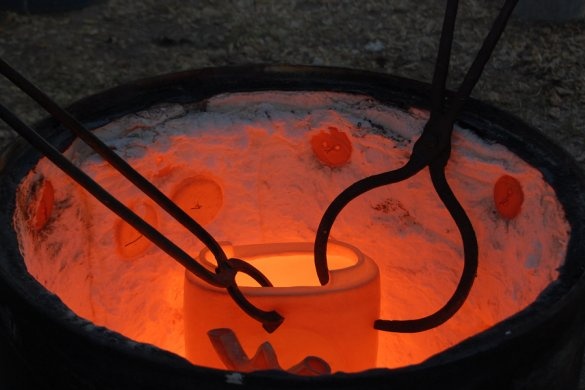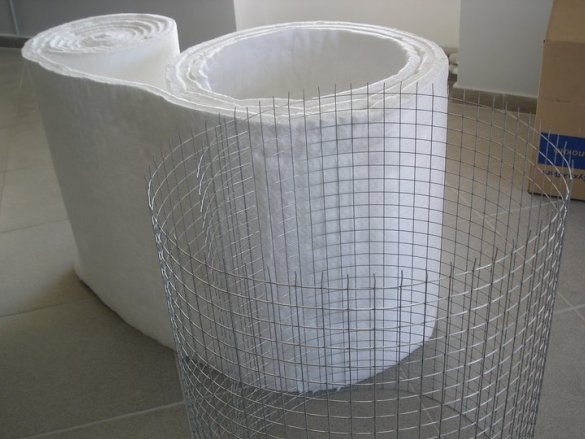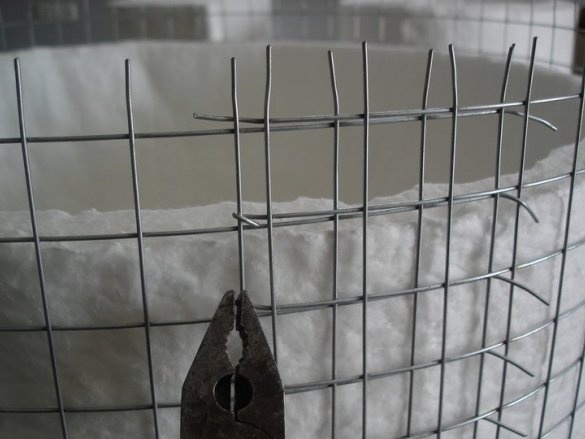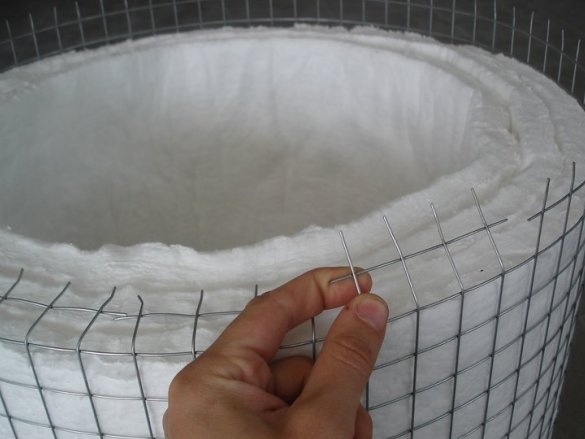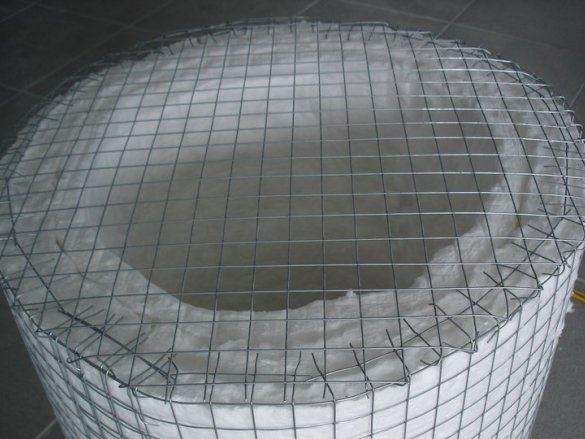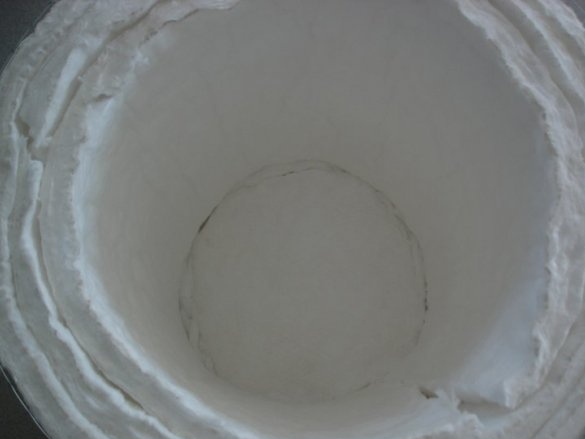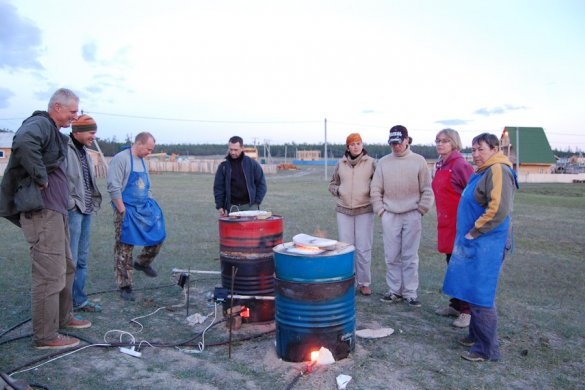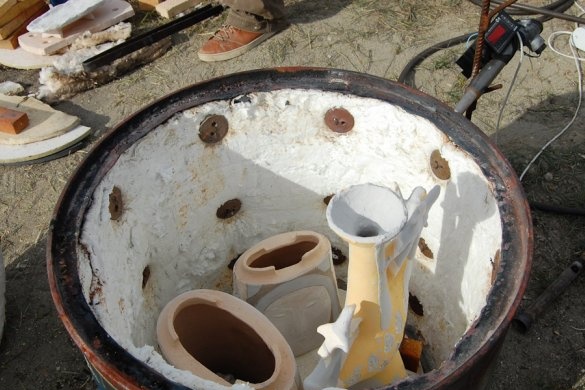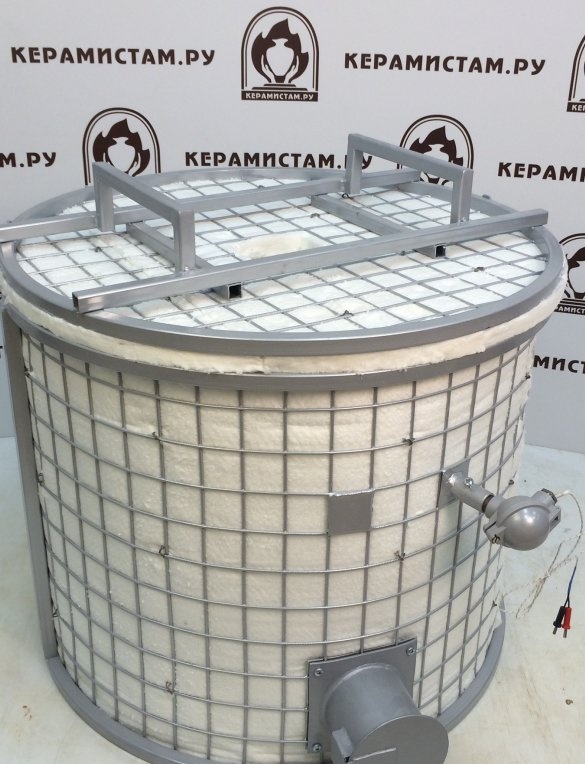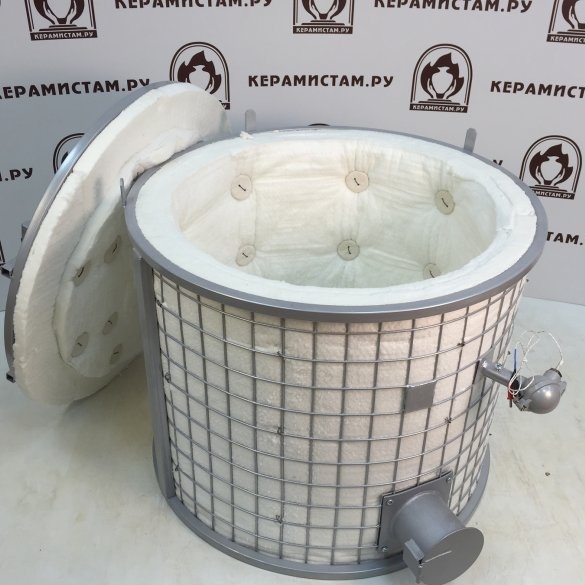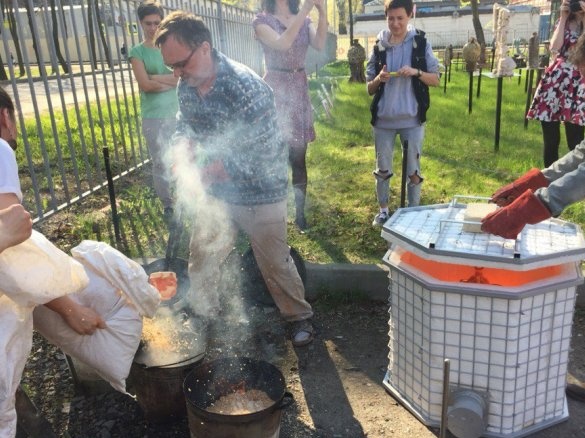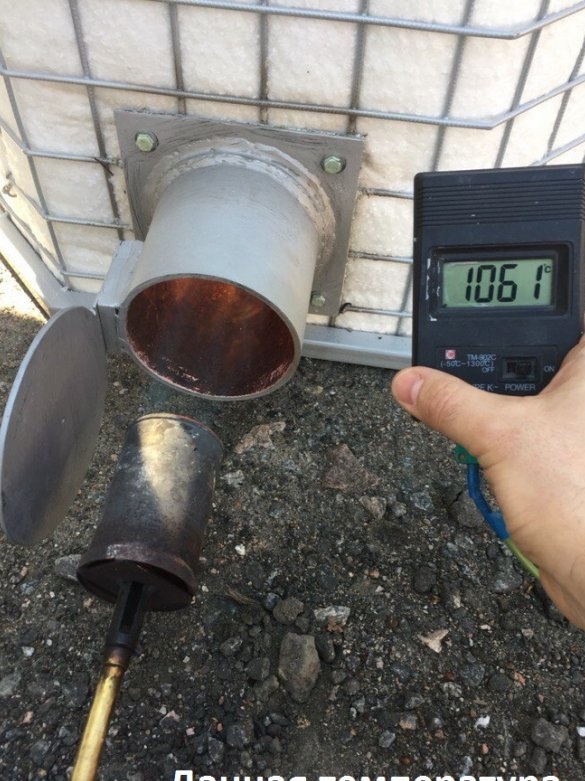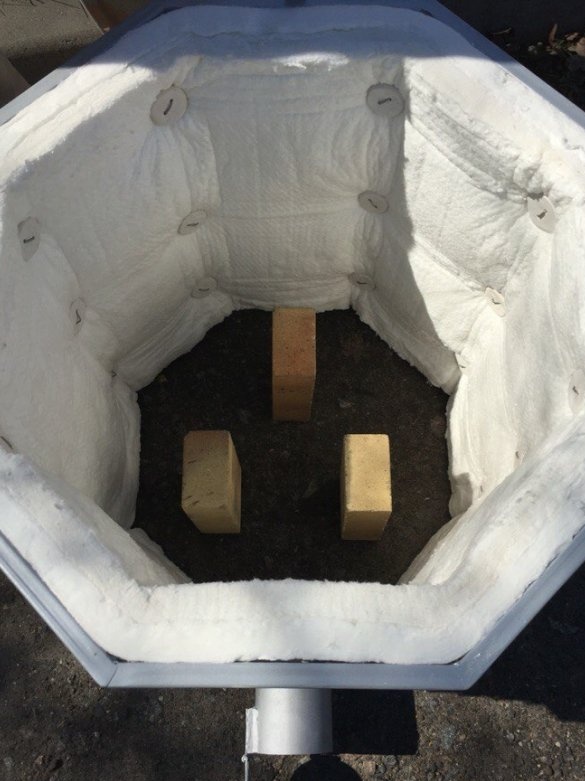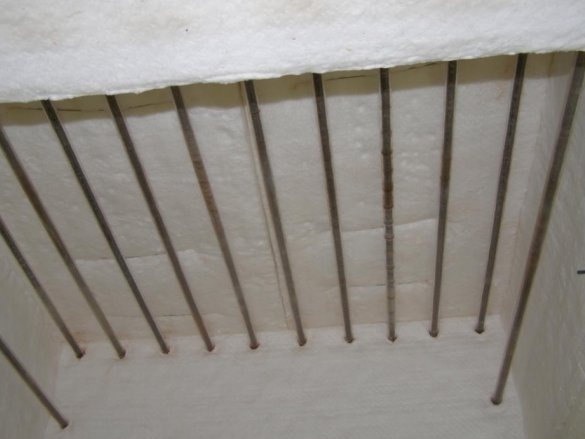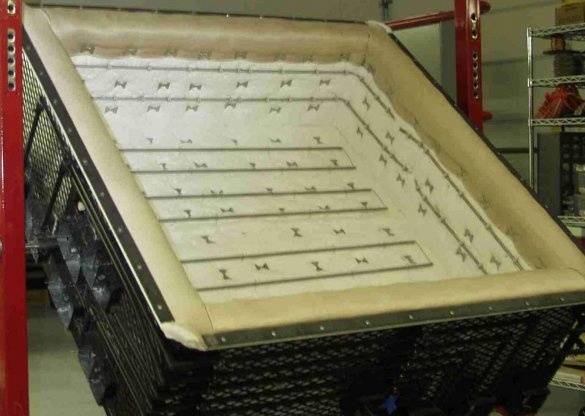The emergence of new materials provides new, sometimes fantastic opportunities. The truth is quite obvious and impresses the mind, but not the heart. Give him examples, but fun. Well, for example ...
It is known that a number of areas of life are simply inconceivable without high temperatures. Take that - DPI (decorative arts). Pottery immediately comes to mind with their firing, enamels, engobes and glazes. Occupation is somewhat less popular, but also certainly requires a special furnace - glass-blowing. Here, the glass after soldering and molding is placed in the furnace for annealing - relieving internal stresses. Without this, marriage or the destruction of the product is almost inevitable. In any case, it can burst at any time during operation. Actually, the workshop of the glassblower (appliance maker or working with decorative glass) is primarily characterized by two numbers - the maximum diameter of the probable product (it depends on the equipment, but primarily on the skill of the master) and its maximum length (only the size of the furnace). That is - the determining value, the status of the furnace among other equipment is very high.
When working with glass, there are several other high-temperature furnace techniques - fusing (fusion in layers) and bending (molding under the own weight of the softened sheet). A special furnace is also needed here, the hearth of which often reaches (furniture, interior and architectural elements, car windows) more than one square meter. Well, you can recall, similar to jewelry, techniques for working with high-temperature enamels, although here the dimensions are, as a rule, much more modest.
In a word, for many workshops, a special furnace is a mandatory equipment. Perhaps you should not say that usually it’s not even equipment, but rather the structure is large, massive, understandably expensive. However, the aforementioned modern materials have significantly changed the situation and today you can easily implement what seemed incredible five years ago. Speaking of furnaces, lightweight, porous refractories with a high operating temperature and very good thermal insulation properties appeared. This made the stove much easier, simpler and more economical.The heating and cooling rate of such an (electric) furnace is easier, more flexible and more precisely controlled by a programmable thermocontroller.
The distribution of flexible refractory materials with high characteristics, in addition, made it possible to make completely simple furnaces on a light metal frame, including portable, transported ones. This made it easy to arrange, for example, a full cycle of ceramic production at field seminars or master classes. Often, "in the field" such furnaces are heated with simple gas-flame equipment. Consider the design of such a furnace as a base, base or principle. So.
What was needed for the manufacture
Welded steel mesh, Cerablanket “ceramic blanket”, a set of small bench tools, ceramic buttons or pipe pieces, nichrome wire. Gas equipment - propane injection burner, cylinder 27 l (50 l) propane, gearbox, connecting hose. To control the temperature - a thermocouple (preferably in a case), if necessary - 0.5 ... 1 m of the compensation wire, a thermometer for this type of thermocouple (if we talk about mobility, it is better with battery power).
Let's get started.
We make a fence for our stove. The size and shape can be chosen almost arbitrarily, but based on the roll of mesh and refractory, it is easiest to make a cylinder. In the case of gas heating, this, among other things, will allow hot products of combustion to be washed better.
The height of the internal working space in this cylindrical case, it is worth choosing equal to or a multiple of the height of the roll of the refractory blanket, otherwise there will be a lot of extra scraps.
The desired diameter of the cylinder from the grid is easily mounted by overlapping edges. The edges are fastened with wire or wire, with their own ends of the grid.
A flange is formed on the protruding edge of the mesh cylinder. In part, it holds the lining roll on the walls (this is the future bottom of the furnace), in part it serves for convenient fastening of the bottom.
A circle is cut out and tied with a wire - a support, the base of the furnace bottom.
From the refractory blanket we cut out several circles and paste through the top. The thickness, of course, is the same as on the walls.
An important point is that the ceramic blanket is periodically tied from the inside with a wire (preferably nichrome non-thick) to the external grid. Through. So that the thin wire does not cut through the soft blanket, they add elements that increase the area. It’s logical and correct - special ceramic buttons, here - the master applied another available ceramic element. It can also be a piece of ceramic tube, a tungsten non-consumable electrode. In furnaces with a slightly lower and better controlled temperature (fusing, bending - usually up to 750 ° C, electric heating, precise temperature control without coasting), elements of non-thick stainless steel can also be used.
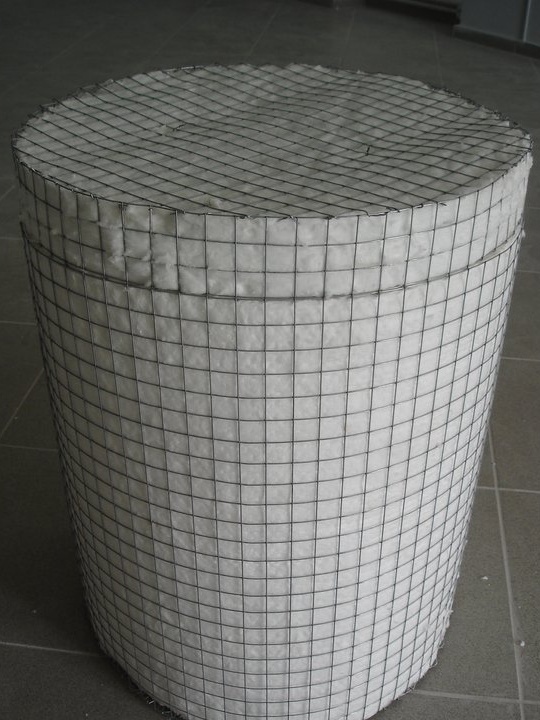
The oven cover is likewise manufactured. Actually, the fence is ready.
To heat the insides with gas, you just need to do two holes. Bottom side, for the burner and on the top lid, for exhaust gases. Do not forget to stick the thermocouple and you can light it.
Such simple stoves are very popular with stray ceramists, at all kinds of their gatherings, and not in vain. Here, for example, a company of ceramists in the open air. Baikal region. Firing is carried out in two home-made barrel kilns, similar in design.
Buttons are thick, metal, home-made burners, ceramic inside - clearly slip casting.
The idea of such an express furnace can be embodied somewhat more carefully, such as, for example, furnaces of an artel ceramistam.ru
Not too impressive, is it? From hard to reach to the garage or home workshop - only the round shape of the hoops of the frame of a square pipe.Everything else will be easily done by a master familiar with the basics of plumbing and welding. Even an ordinary consumable electrode. Less current, electrode diameter 2 mm, cut in half, polarity reversed. But meanwhile, about fifty thousand blood. Plus the cost of transportation to the destination. True, in addition, they give a flask (bottom), a burner and all gas offal, a thermometer.
The furnace adapted for the workshop without bending equipment. In the photo, the firing system "cancer". This is when a hot skull is immersed in sawdust or straw. It turns out a kind of beautiful surface.
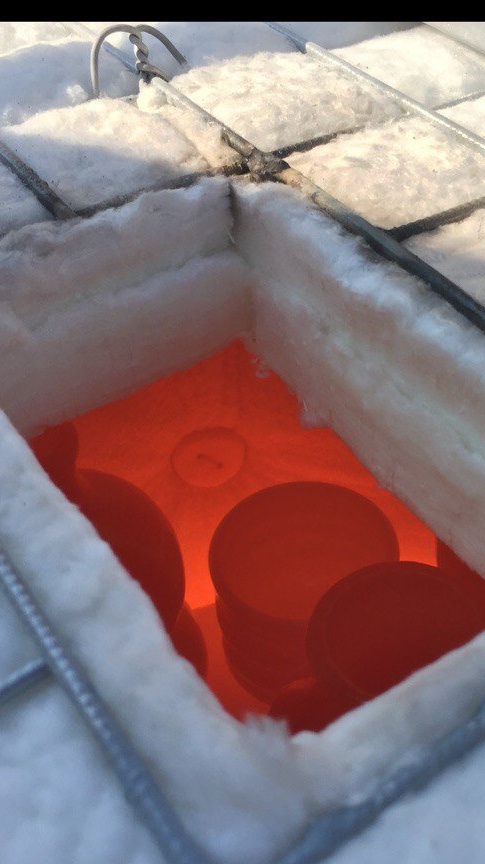
Yes, a number of such furnaces, such as this one, do not have a regular bottom at all. That is completely. Instead, a ceramic plate is laid in it before work, -. It is slightly raised above the ground, it is possible on bricks. There can be several of these hazelnuts and then cups and pots are laid on floors. This saves a lot of space.
Light stoves made of ceramic blankets and nets are used not only by ceramists. Glass workers are not far behind, although the shape of the furnaces is somewhat peculiar - its own specifics. For example, furnaces for fusing, and especially bending, are a sort of lightweight metal suitcase lined with such refractories from the inside. Electric heaters - spirals, in a deep lid. Gas heating is not used - dust (melts into glass), temperature unevenness, it is difficult to precisely control it.

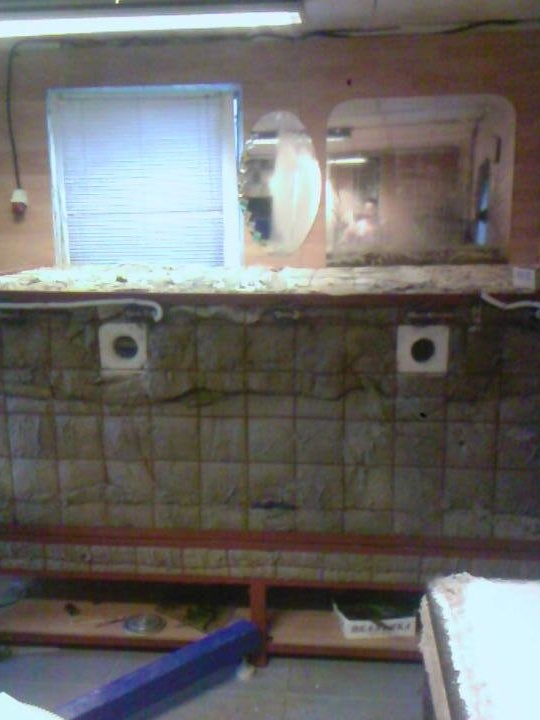
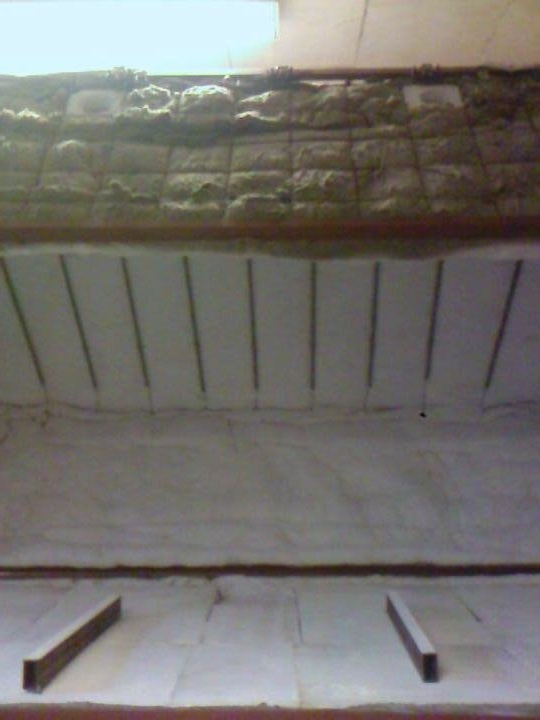
conclusions
So. The design principle of simple and inexpensive high-temperature furnaces is considered. The principle is very adaptive - it is easy to take into account the specific requirements for heating equipment. The furnaces are light (including quite mobile), economical, relatively compact. The small mechanical resistance of the soft soft lining is fully compensated by its low cost and high maintainability of the structure as a whole. In furnaces, both fire heating (gas, liquid fuel, firewood) and electric can be used. In the latter case, when using modern programmable thermocontrollers, in addition to accurately maintaining the temperature and performing a complex thermoprofile program, it is possible to realize the low heating and cooling rates (important!) inherent in heavy heat-intensive furnaces.
Babay Mazay, November, 2019

